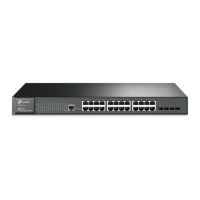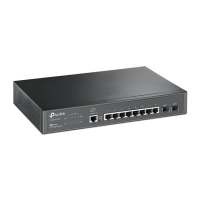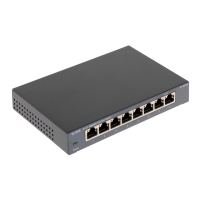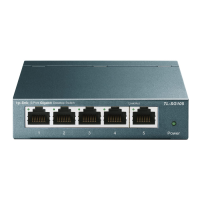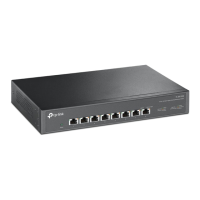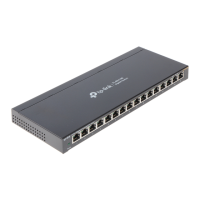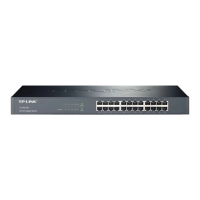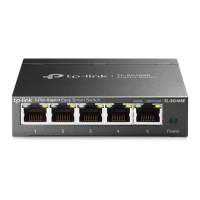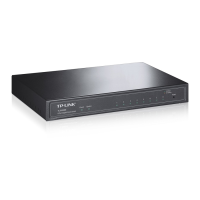282
Configuration Procedure:
Step Operation Description
1 Install t
software.
Required. For the client computers, you are required to
install the TP-LINK 802.1X Client provided on the CD.
Please refer to the software guide in the same directory
with the software for more information.
2 Configure the 802.1X globally.
Required. By default, the global 802.1X function is
disabled. On the Network Security→802.1X→Global
Config page, configure the 802.1X function globally.
3
Configure the 802.1X for the
port.
Required. On the Network Security→802.1X→Port
Config
page, configure the 802.1X feature for the port of
the switch basing on the actual network.
4 C
onnect an authentication
server to the switch and do
Required. Record the information of the client in the LAN
to the authentication server and configure the
corresponding authentication username and password for
the client.
5 Enable the
globally.
Required. On the Network Security→AAA→Global
Conifg page, enable the AAA function globally.
6
Configure the parameters of
the authentication server.
Required. On the Network Security→AAA→RADIUS
Server Conifg page
, configure the parameters of the
RADIUS server.
Note:
1. The 802.1X function takes effect only when it is enabled globally on the switch and for the port.
2. The 802.1X function cannot be enabled for LAG member ports. That is, the port with 802.1X
function enabled cannot be added to the LAG.
3. The 802.1X function should not be enabled for the port connected to the authentication server.
13.10 PPPoE
PPPoE ID-Insertion Overview
The PPPoE ID-Insertion feature provides a way to extract a Vendor-specific tag as an
identifier for the authentication, authorization, and accounting (AAA) access requests on an
Ethernet interface. When enabled, the switch attaches a tag to the PPPoE discovery packets,
which is called the PPPoE Vendor-Specific tag and it contains a unique line identifier. There
are two formats of Vendor-specific tags: Circuit-ID format and Remote-ID format. The BRAS
receives the tagged packet, decodes the tag, and uses the Circuit-ID/Remote-ID field of that
tag as a NAS-Port-ID attribute in the RADIUS server for PPP authentication and AAA
(authentication, authorization, and accounting) access requests. The switch will remove the
Circuit-ID/Remote-ID tag from the received PPPoE Active Discovery Offer and
Session-confirmation packets from the BRAS.
In this Chapter the switch will work as a DSLAM.
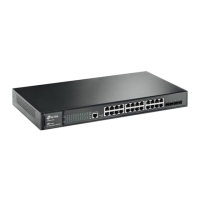
